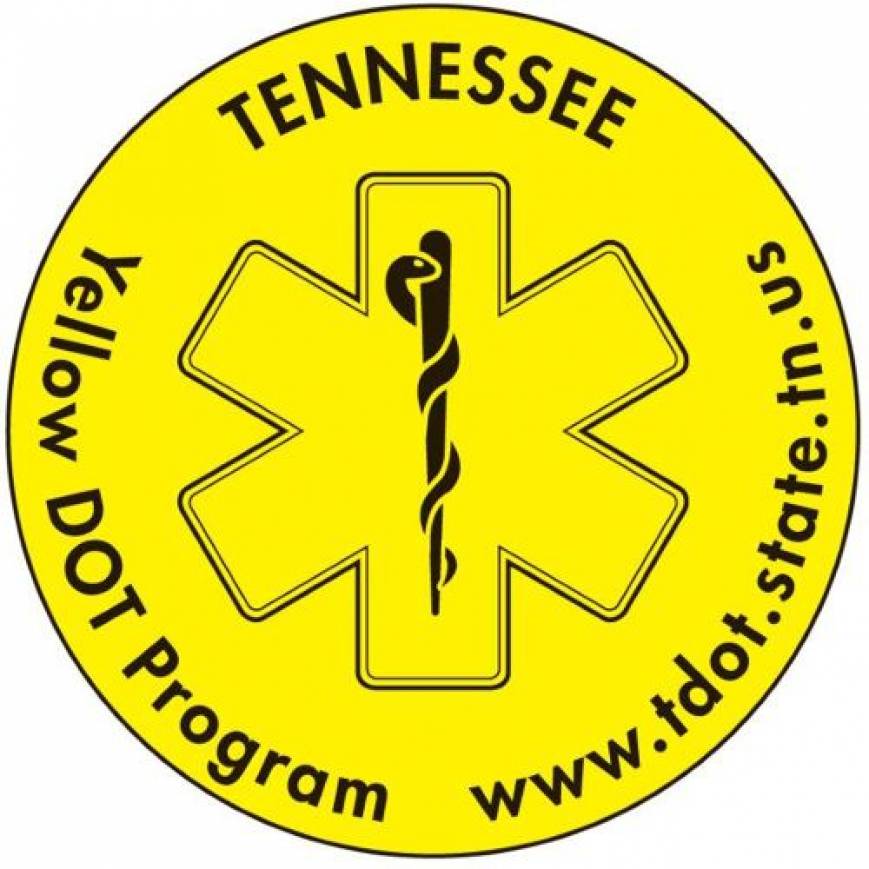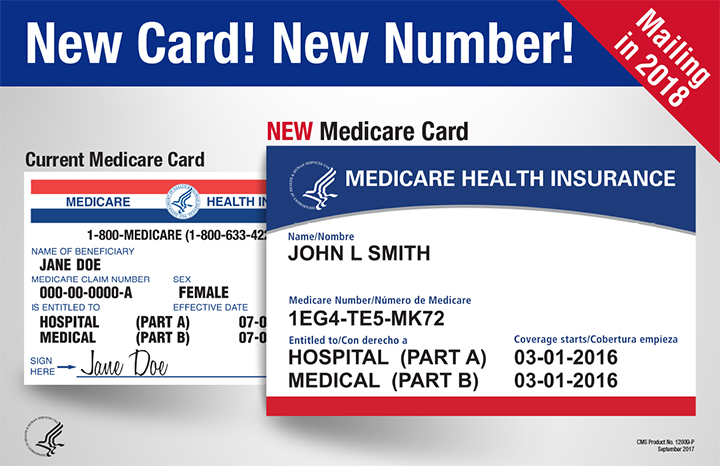Archive for ‘Seniors’ Category
Organize To Help First Responders: The Yellow Dot Program
Most of us spend time thinking about how to prevent medical emergencies. We try to exercise and eat healthily. We make doctor’s appointments, get all of the appropriate medical screening tests for our age group and gender, and we learn how to manage our health conditions in hopes of preventing complications.
Nobody likes to think about medical emergencies, but for the same reason we buy insurance (whether auto, home, health, or, in the worst case scenario, life insurance), we need to prepare for the unexpected. And when the unexpected does happen, we depend on first responders, particularly emergency medical technicians and paramedics, who have the training necessary to help us get safely treated.
So why not help the helpers?

“Downtown Hospital Ambulance” by sponki25 is licensed under CC BY 2.0
In our next two posts, we’re going to look at two resources to organize essential medical information so that first responders can render aid when we need it, whether we’re out and about, or at home.
YELLOW DOT PROGRAM
At a DiabetesSisters meeting a few years ago, someone mentioned the existence of Tennessee’s Yellow Dot program, but almost nobody in the room was aware of this life-saving project.

The Yellow Dot Program, available at no cost to participants, was initially developed as a regional program in the early 2000s. It is now a national program sponsored and funded by the United States Department of Transportation as a result of the work of the 113th Congress, the bill having been introduced by West Virginia’s Senator Joe Manchin III.
The purpose of the program is to help automobile drivers and their passengers communicate vital information to medical personnel (as well as police, firefighters, and other first responders) during road emergencies, like car accidents.
In case drivers or passengers are incapacitated, in shock, or are otherwise unable to communicate about their medical conditions, car owners can affix yellow stickers to their rear windshields to alert first responders that occupants of the car may require specialized medical attention. (Smaller stickers are available for motorcycle use.) Although state programs tend to accent Yellow Dot for use by senior citizens, anyone with a serious health condition or atypical health situation should consider making use of the program.
The stickers let first responders know to look in the glove compartment for a kit: a yellow plastic folder, container, or envelope. In it, they will find information regarding:
- the medical conditions, allergies, recent surgeries, and special needs of anyone riding in the car who might require special care
- lists of current prescriptions, dosages, and prescribers
- emergency contact information
- a photograph of the person so that he or she can be quickly identified as needing special attention
The Yellow Dot Program maintains no centralized database at any government or community level, so individuals concerned about privacy breaches should feel at ease. The information is maintained in the glove compartment and is not accessed by anyone (except the owner or passenger of a vehicle) unless there is an emergency situation.
At the meeting where I first learned about the Yellow Dot Program, we talked about the importance of police and medical personnel knowing that someone in the car might be suffering from hyper- or hypoglycemia, which can appear to the untrained eye to resemble drunkenness, stroke, dementia, or other health conditions.
Research shows that 90,000 to 100,000 individuals die each year due to adverse drug reactions, some of which result from standard treatments “in the field” to which an individual may be allergic. Similarly, an accident victim who has had a recent surgery may be at greater risk for complications, and first responders need to know that.
HOW TO PARTICIPATE
If you know someone who has a medical condition that might require special on-the-scene treatment by EMTs and paramedics, encourage them to sign up for the Yellow Dot Program. Management of the program varies by location, and though it’s overseen by state Departments of Transportation, management often occurs at the county level.
While some programs allow online sign-up, other communities require that participants come to an enrollment station or registration center (often at the nearest DMV, although some local businesses sponsor the printing of Yellow Dot stickers and kits and help enroll participants). Help your loved ones gather the vital paperwork – including medical and prescription information and a current photo – to put in the yellow folder to be kept in the glove compartment, and make sure you or they actually put the sticker on the rear windshield!
Although the Yellow Dot Program is funded nationwide, it is voluntary, and many states have declined to participate; other states have shown interest but have not yet rolled out their programs. If your state is listed (below) without a link, there is likely no centralized program in your state, and you will need to call or search for your county’s transportation department or division of aging services. (Yes, Paper Doll feels this is all very disorganized at the state and federal levels! Harrumph!)
Iowa
Kansas
Massachusetts (search “Yellow Dot Program” and the name of your town rather than county)
Minnesota
New Hampshire
North Carolina
Note: In 2017, Illinois mysteriously canceled participation in the Yellow Dot Program, but encourages all drivers to register with the state’s emergency contact database, which serves a similar function.
If yours isn’t one of participating states listed belong, contact your state’s Department of Transportation to inquire if and when the Yellow Dot program will be available for you. While you’re waiting, you can purchase an unofficial National Yellow Dot Program kit (with stickers and standard or folding pockets) directly from retailer StoreSMART in various batch sizes (from 2 to 2500) or in packages of five from Walmart.
In addition to the stickers and kits, StoreSMART has free, downloadable PDF medical forms. (You can also review the websites of the participating states, above, as many, such as Alabama, have their own downloadable medical forms, accessible to all.)
COMMUNITY OPPORTUNITIES
Various communities have found opportunities to use the yellow dots beyond private vehicles. Adult day care centers for senior citizens and people with disabilities, as well as traditional day care centers for children, can make use of the program by helping individuals in their care (and caregivers or parents) develop a person-specific packet, and make copies for family vehicles, program/center vehicles, and care centers.
Next time, we’ll be talking about the Vial of Life program, and how to ensure that first responders can locate your essential medical information when they attend to you at home. Until then, be healthy, be safe, and be organized.
Paper Doll on the New Medicare Cards: How To Organize Against Identity Theft & Scams
Are you one of the almost 60 million Americans enrolled in Medicare? Are your parents or grandparents? If so, it’s important to know that all Medicare recipients will soon be getting new identification cards. The first of the new cards will be mailed starting April 1, 2018, and the rollout will continue through April 30, 2019.
Why the Change?
According to the Centers for Medicare and Medicaid Services (CMS), the new cards will better protect an enrollee’s identity and guard against fraud. Basically, the hope is that the new Medicare ID cards will make it much harder for the bad guys to scam Medicare recipients and steal their identities.
The new Medicare cards will have less personally identifying information than in the past. Cards won’t have the bearer’s Social Security number, gender, or signature.
Each new card will have a computer-generated Medicare Beneficiary Identifier (MBI) assigned specifically to each Medicare enrollee. The MBI will be a combination of eleven numbers and letters, and healthcare providers (including physicians, labs, and hospitals) will be required to bill using MBI instead of Social Security numbers.
Medicare has created a special website, go.medicare.gov/NewCard just to help people feel more at ease with the changes. (CMS has special links available to help healthcare providers and office managers, health insurance and drug plans, employers and media, and individual states cope with the change.)

But what do you have to do?
Step one is to be aware that the change is coming. If you’re a Medicare recipient, or your parents, grandparents, or older friends have Medicare, start by letting them know the cards are on their way.
Doctor’s offices will be asked to play the following video for the benefit of their Medicare patients, and I encourage you to share this video via social media so that other enrollees and their loved ones can be apprised of what’s going on.:
Cards will come automatically. Benefits stay the same. There’s nothing else you absolutely have to do. However, if you’ve moved recently or are just starting to receive benefits, the Social Security Administration urges Medicare enrollees to make sure the agency has their correct address on file.
Log into your Social Security account at socialsecurity.gov/myaccount (What? you didn’t follow Paper Doll’s advice for setting up your online Social Security account? Not even when I pestered you about it?) or call 800-722-1213 to update your address in the system.
[One special note: Every Medicare enrollee is getting a new Medicare card, but if you are also enrolled in a Medicare Advantage Plan (like an HMO or PPO), your Medicare Advantage Plan ID card is your main card for Medicare. So hold onto your Medicare Advantage Plan ID card, and keep it for whenever you need healthcare care. However, healthcare providers may ask you to show your new Medicare card, so keep it ready, too.]
So what’s the catch?
The Department of Justice reports that identity theft for seniors aged 65 and above is a serious problem. In fact, in 2014, the most recent year for which statistics have been released, 2.6 million seniors are victims of identity theft annually! (The Federal Trade Commission has released a document explaining the seven most common identity theft schemes targeting seniors.)
There’s little doubt that scammers and identity thieves are already anticipating this Medicare card change, using potential confusion to their scummy, scammy advantage. However, sharing some basic information can help protect those most in danger of being victimized.
Spread the word (to Dad, Grandma, Aunt Gertrude, and your older pals) that if any of the following things happen, it’s a scam.
If you’re called on the telephone and asked to pay to receive your new Medicare card, hang up. The card is free to all Medicare recipients.
If you’re called and asked for your Social Security number and bank number in order to get your new card, hang up. Medicare won’t call you. Medicare doesn’t need to know your banking information. Ever.
If you’re called and told you will lose your Medicare benefits if you don’t send money or provide your banking info or credit card now, roll your eyes and hang up.
If there are any “fragile” seniors in your life who may be at risk for being coerced, assure them that if they ever get such a call, they should hang up without fear. If they are still ill at ease, tell them to ask for the caller’s name and number and say that their “financial representative who handles all of these tasks” for them will return the call. Then, you can call and report these ne’er-do-wells to the police.
What’s the Timeline?
Medicare beneficiaries in Delaware, Maryland, Pennsylvania, Virginia, West Virginia, and the District of Columbia will be the first to receive the replacement cards (between April and June). Medicare enrollees in Alaska, American Samoa, California, Guam, Hawaii, the Northern Mariana Islands, and Oregon will also start getting their cards in the April to June 2018 range. If you’re in any other state, the mailing date is merely defined as “after June 2018” and the rollout will continue over the course of the next twelve months. Almost 60 million recipients getting new cards means a lot of mail to process!
Medicare recipients will have until 1/1/2020 before they are required to use the new card, and while both cards will be valid until that date, getting the new card in action and shredding the old card will ensure protection. I also encourage you to make a photocopy of your new Medicare card (just as I always advise photocopying the contents of your wallet) and keep it in a safe place, like your fireproof safe with your other VIPs (very important papers).
For more on the important documents that should (and shouldn’t) be in your wallet, refer to these classic Paper Doll posts:
What’s in Your Wallet (That Shouldn’t Be)?
What’s in Your Wallet (That Should Be)?
What’s in Your Wallet (Part 3): A Little Insurance Policy
Lost and Found: GONE in 60 Seconds: Your Wallet
Stay healthy. Stay aware. Stay organized!




Follow Me